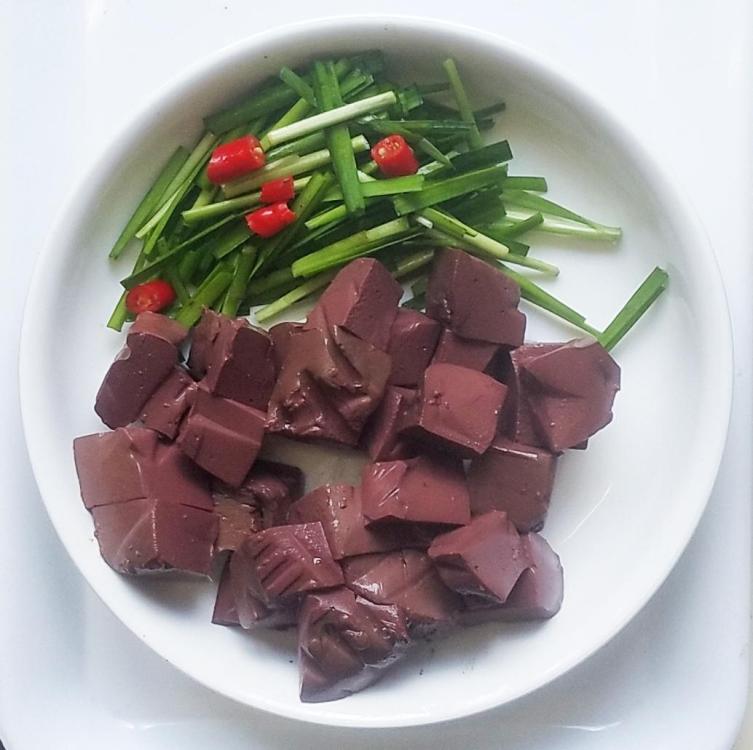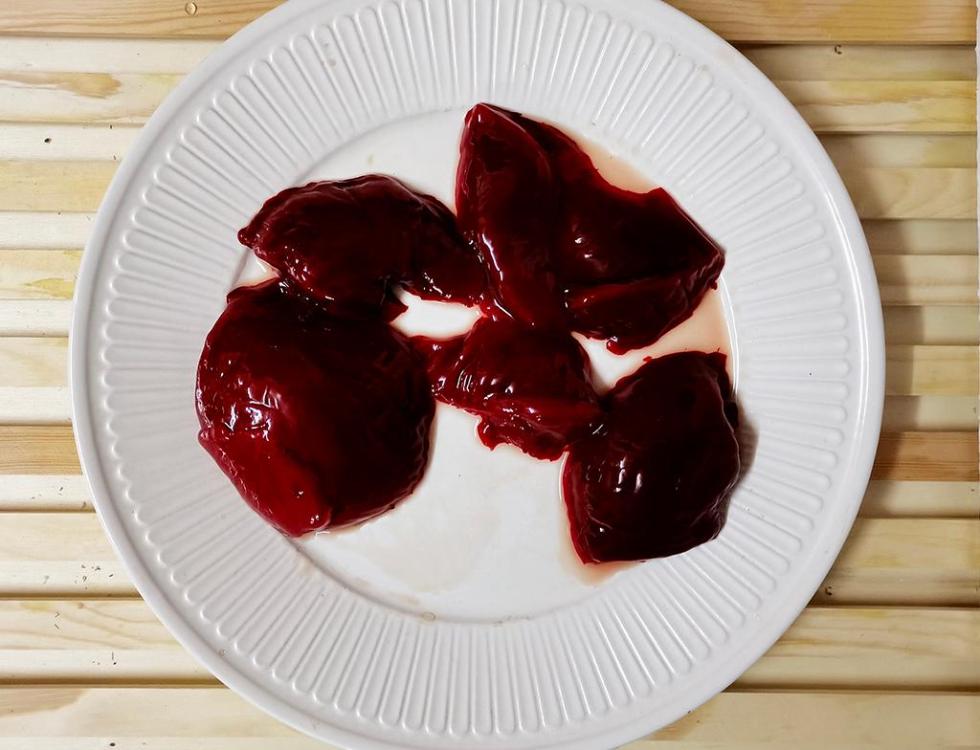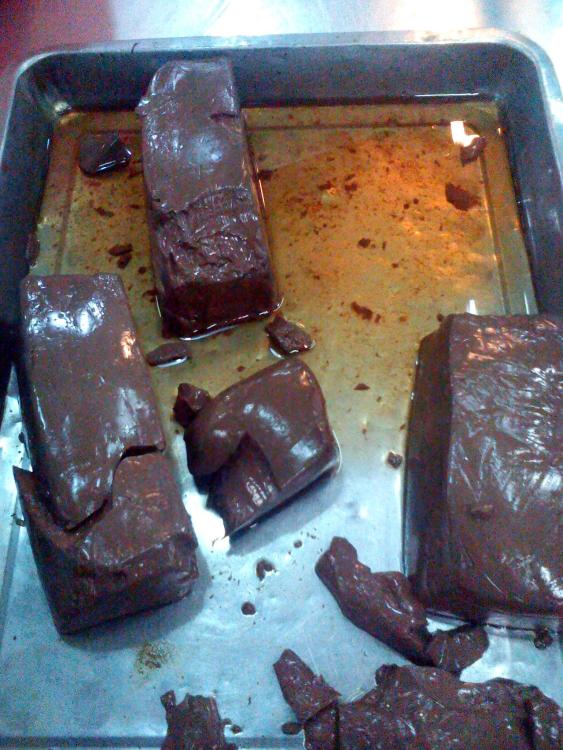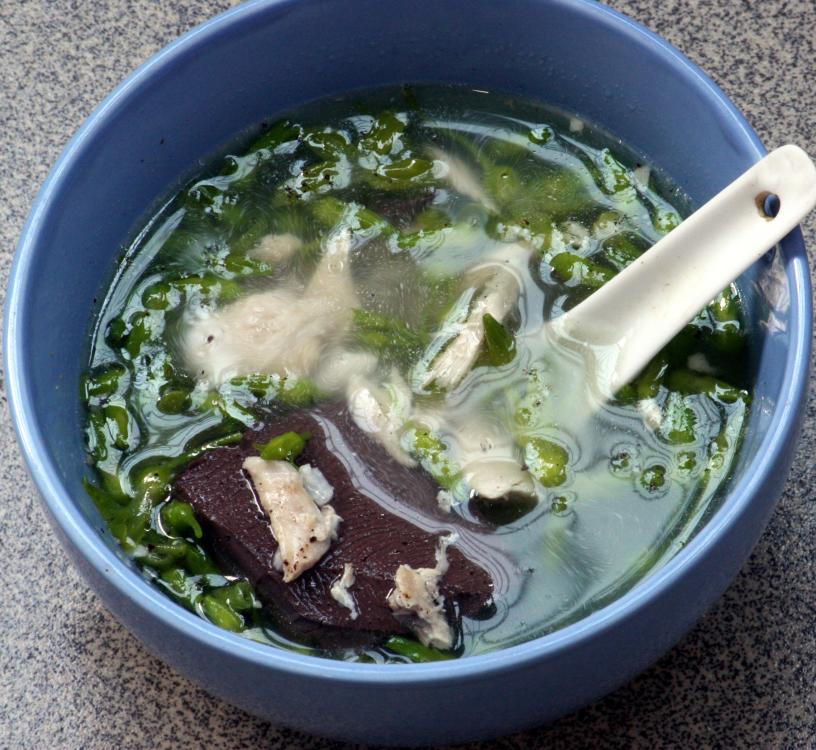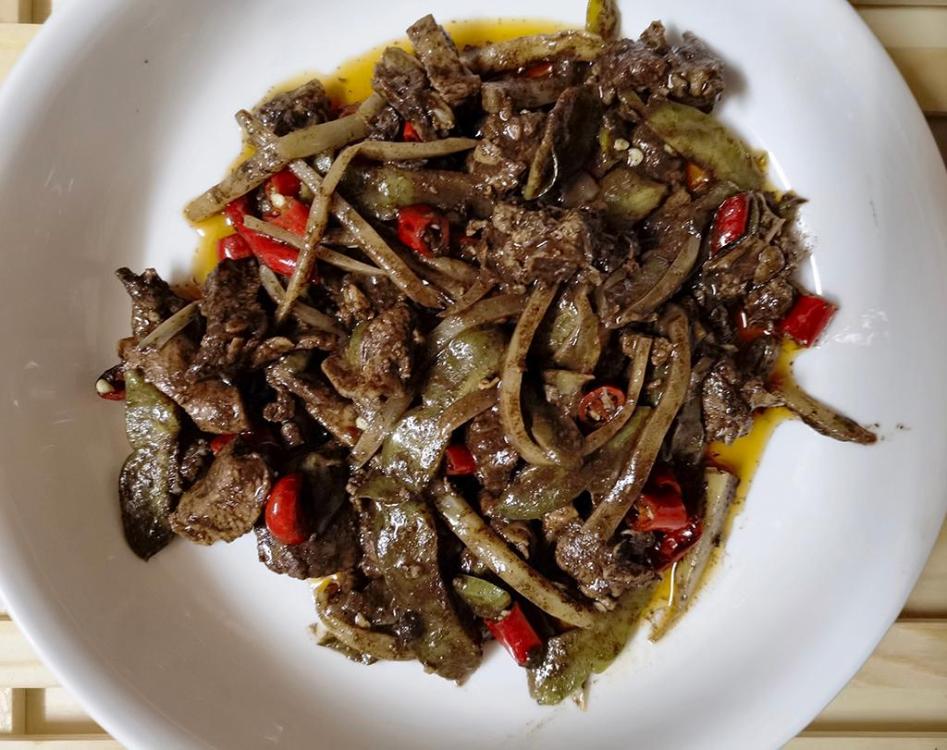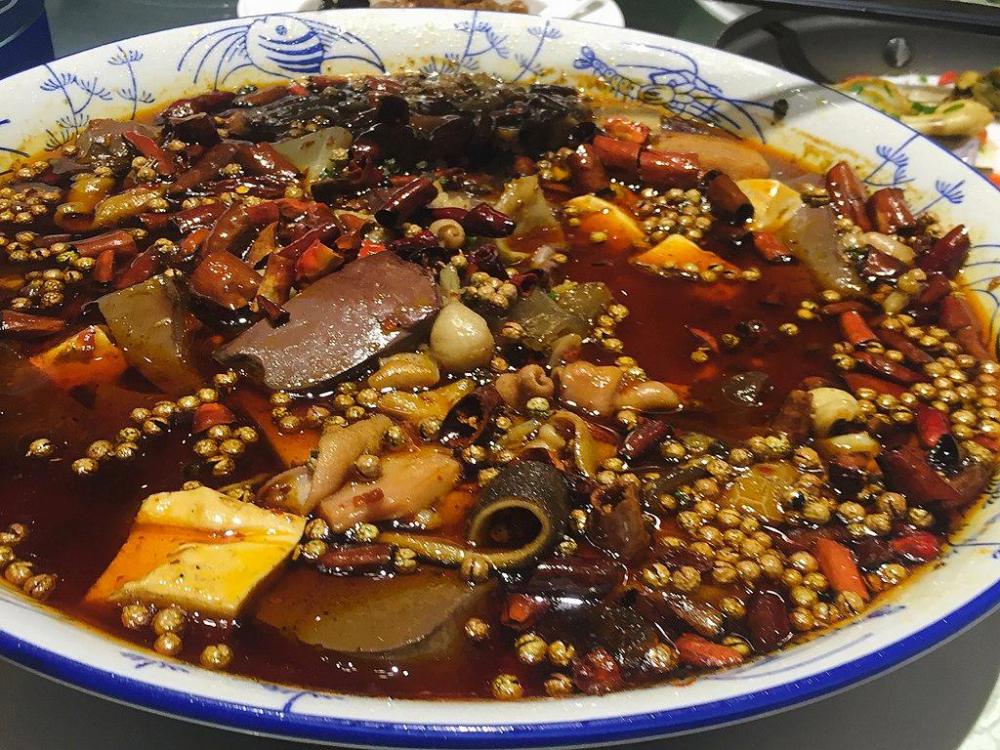Things are about to get bloody.
For decades, everywhere I’ve gone, I’ve kept half an eye open for one particular ingredient. Fortunately, I’ve seldom been disappointed. It’s an ingredient used worldwide, albeit in differing amounts in different places. East Asia uses it a lot; North America very little. Both my homelands, the UK and France use it fairly liberally. I’ve eaten it on four continents and the only reason it’s not more is that I’ve only been to four. The others have and use it, too.
Not all of it is poultry related; in fact most isn’t, but there’s still plenty left for poultry enthusiasts to be seek out. I’ll start right here in China, where its use is possibly most widespread. I am, of course, talking about the sustainer of life itself, so important that our language is full of metaphors using its name. The very life blood of society.
Chicken's Blood.
I was virtually brought up eating marag dhubh, the Scots Gaelic for black pudding. I’ve eaten blood sausage / black pudding from England, France, Germany, Italy, North Korea, Russia, Spain, Portugal, Poland and Austria and I’ve missed some out. However, none of those feature here as none that I’ve had used poultry blood. Pigs’ yes, mostly. But also cattle, horse, deer and camel blood. Poultry livers often turn up in sausages, but not, so far as I can tell, blood.
I’ve eaten blood pancakes in Scandinavia; raw duck blood salad in Laos; sangrecita, Peruvian fried chicken’s blood in Jamaica (!); torta di sanguinaccio, a pastry made using chocolate and blood in Italy; pork blood phở in Hanoi; yaks’ blood on the Tibetan plateau; гематоге́н, Hematogen a sweet nutrition bar containing bull’s blood in Russia. I’m resolutely haematophagous.
But first let me say why we should consume blood unless we have strong religious or ethical taboos against doing so.
Number one, it is highly nutritious, being rich in rich in protein and minerals such as iron, and in Vitamin D.
Number two, it makes solid economic sense. It is said that Denmark for example, a relatively small country, has around 24 million pigs, 4 for every person. Around 25,000 are slaughtered every day just in one small country, yet almost all of that blood is thrown away – up to 4.5 kg per pig. What a total waste.
Number three, once people get over their often irrational aversion to eating it, most people find that blood is delicious. Full of flavour of its own and useful not only as a nutrient, but as a thickener and flavour enhancer to other ingredients.
Duck's Blood
Blood from chicken and duck bloods are the most commonly used among poultry, but also turkey, goose, ostrich and emu are enjoyed in various places.
Blood congeals rapidly on contact with air which is partly why we don’t bleed to death when we have a minor cut, but it also means that, unless it is very fresh, blood is usually consumed in a semi-solid state. This coagulation process can be slowed down by adding an acid, usually vinegar, or speeded up by gently heating the blood.
Coagulated Chicken's Blood - This the blood from thefirst picture after half an hour.
I can’t tell you where to buy poultry blood or if it’s even possible in your location; probably asking poultry farmers could lead to a supply. Be sure, though that it is fresh. Frozen blood is sometimes sold in Asian markets. Avoid it. The freezing alters its structure and thawed frozen blood tastes bloody awful. Dried blood is also available, but not poultry blood, so far as I can see. Anyway, it wouldn't be suitable for many of the dishes we are going to see.
I am lucky here in that in the very first Chinese market I visited, in Xi’an, there was a woman behind a trestle table covered in whole and sectioned chickens. To one side were plastic rice bowls full of fresh blood for sale. Nearby was another table , this one covered in ducks and bits of ducks and again, the blood, both liquid and congealed. And every market I’ve been in since (hundreds) has been the same. Chicken and duck blood is also sold in some supermarkets.
Having grabbed your blood, what to do with it? For now I’ll say some of the ways it is used here and in neighbouring countries and in another post, maybe tomorrow, I’ll look at the wider picture.
Solid, congealed blood, known as 血豆腐 (xuè dòu fu), blood tofu, usually made from duck’s blood, is often added to soups and cubed to hot pots. It contains no tofu, but is so-named because the texture is similar to that of tofu. Blood and seaweed soup is a favourite as is blood egg drop soup. Chicken’s blood (鸡血 - jī xuè) is used as a thickener in many dishes.
血豆腐 - "Blood Tofu" - Congealed Duck's Blood
Not at all famous is my own invention, chicken meat, duck's blood and Tonkin jasmine soup.
Chicken, Duck's Blood and Tonkin Jasmine Soup
However, one of Shanghai’s most famous dishes is 鸡鸭血汤 (jī yā xuè tāng), duck and chicken’s blood soup made by boiling the blood with chicken offal and other body parts. It is spicy and slightly sour. Shanghai people regard it both as a food and a medicine.
全州醋血鸭 (quán zhōu cù xuè yā) - Quanzhou ‘vinegar blood duck’ is a local Guangxi dish, derived from a Hunanese dish. A young duck is chopped on the bone and stir fried with garlic, ginger, chilli, bitter melon, sesame and peanuts and finished in a rich sauce made from the bird’s blood and vinegar. Served with green vegetables of choice and rice, it makes for a delicious lunch or instead can be served as part of a larger family style meal. The vinegar cuts the richness of the blood, whereas the blood limits the astringency of the vinegar, leaving the duck tender and juicy, but not at all greasy.
全州醋血鸭 - Quanzhou ‘vinegar blood duck’
毛血旺 (máo xuè wàng) is a well-known Sichuan soup dish consisting of duck's blood with beef tripe, chicken gizzard and other offal simmered in a broth made with Sichuan peppercorn and chillies. It is appreciated for its several different textures - silky, chewy, crisp.
毛血旺 - Mao Xue Wang - Image is licensed under the Creative Commons Attribution-Share Alike 4.0 International license.
Tomorrow the rest of the world and poultry blood.



